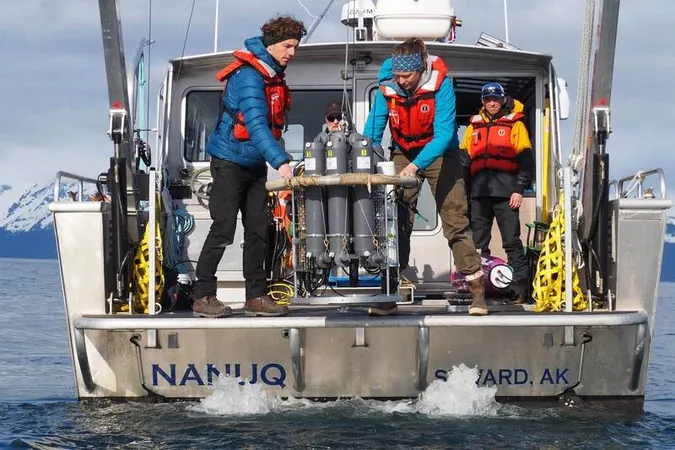
Revolutionary CO2 Sensor Enhances Seaglider Technology: A Game-Changer for Ocean Research!
2024-11-27
Author: Wei Ling
Revolutionary CO2 Sensor Enhances Seaglider Technology: A Game-Changer for Ocean Research!
In a remarkable breakthrough, researchers from the University of Alaska Fairbanks (UAF) and their industry allies have made significant strides in ocean carbon dioxide measurement technology. Their findings, now available for scientists worldwide, were published in the esteemed journal, Ocean Science.
Over the past six years, an innovative team from the UAF International Arctic Research Center, in collaboration with industry partners Advanced Offshore Operations and 4H JENA Engineering, has developed a cutting-edge sensor that can be mounted on an unmanned underwater vehicle known as the Seaglider. This state-of-the-art sensor captures carbon dioxide measurements, sending real-time data via satellite and offering impressive spatial and temporal resolution for extended periods.
To make this advancement possible, the team worked tirelessly to engineer the Contros HydroC sensor to be more lightweight and compact, meeting the constraints necessary for it to be integrated into the Seaglider. Despite these modifications, the sensor remains larger and requires more power than the standard devices used on Seagliders, prompting the researchers to cleverly adjust buoyancy through the integration of weighted elements and custom 3D-printed components.
Carbon dioxide (CO2) is a notorious greenhouse gas emitted during the combustion of fossil fuels, such as coal, oil, and natural gas. It is a critical factor in the global warming crisis, as it traps thermal energy in the atmosphere. The oceans have acted as a buffer against climate change by absorbing roughly one-third of CO2 emissions since the dawn of the industrial revolution. However, this process has not come without repercussions; it has led to significant ocean acidification, threatening marine ecosystems.
But the innovation doesn't stop there! Following their success with the CO2 sensor, the UAF team has set its sights on monitoring another potent greenhouse gas: methane. The initial tests are currently underway on a newly equipped Seaglider fitted with a methane sensor, potentially paving the way for a comprehensive understanding of gaseous emissions and their impacts on our climate.
Stay tuned as this groundbreaking technology sets out to reshape oceanographic research and deepen our understanding of climate dynamics! Would you believe that underwater vehicles could hold the key to combating climate change? The future of our oceans and planet may very well hinge on these technological advancements!




 Brasil (PT)
Brasil (PT)
 Canada (EN)
Canada (EN)
 Chile (ES)
Chile (ES)
 España (ES)
España (ES)
 France (FR)
France (FR)
 Hong Kong (EN)
Hong Kong (EN)
 Italia (IT)
Italia (IT)
 日本 (JA)
日本 (JA)
 Magyarország (HU)
Magyarország (HU)
 Norge (NO)
Norge (NO)
 Polska (PL)
Polska (PL)
 Schweiz (DE)
Schweiz (DE)
 Singapore (EN)
Singapore (EN)
 Sverige (SV)
Sverige (SV)
 Suomi (FI)
Suomi (FI)
 Türkiye (TR)
Türkiye (TR)